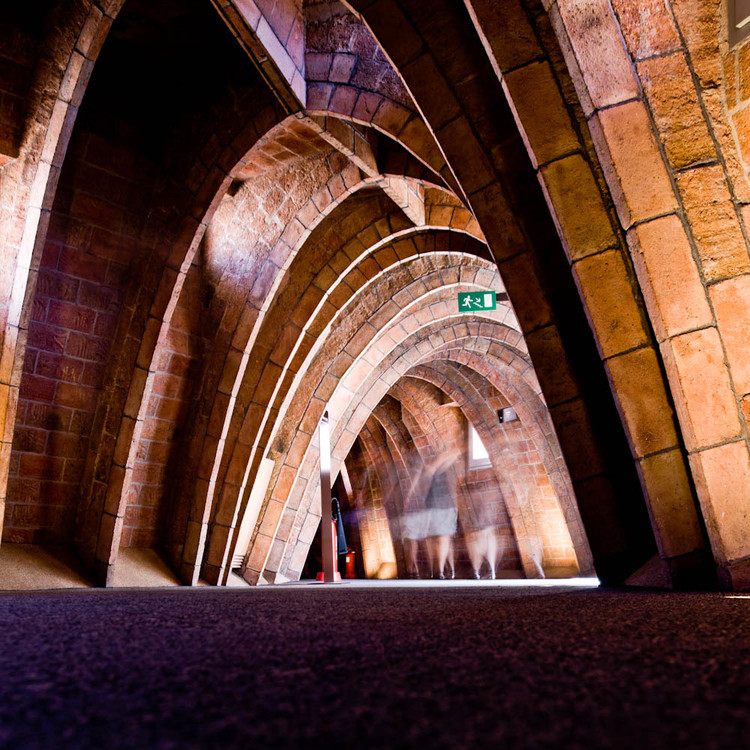
With its undulating façade and surrealist sculptural roof, Antoni Gaudi’s Casa Milà appears more organic than artificial, as if it were carved straight from the ground. Known as La Pedera, the quarry, the building was inspired by the Modernista movement, Spain’s version of Art Nouveau..
Constructed in 1912 for Roser Segimon and Pere Milà, the building is divided into nine levels: basement, ground floor, mezzanine, main floor, four upper floors, and attic. The ground floor acted as the garage, the mezzanine for entry, the main floor for the Milàs, and the upper floors for rent. The building surrounds two interior courtyards, making for a figure-eight shape in plan. On the roof is the famous sculpture terrace. Practically, it houses skylights, emergency stairs, fans, and chimneys, but each function’s envelope takes on an autonomously sculptural quality which has become a part of the building itself.

Structurally, the building is divided between structure and skin. The stone façade has no load-bearing function. Steel beams with the same curvature support the facade’s weight by attaching to the structure. This allowed Gaudi to design the façade without structural constraints, and ultimately enabled his conception of a continuously curved façade. The structure holding up the roof, too, allows for an organic geometry. Composed of 270 parabolic brick arches of varying height, the spine-like rib structure creates a varied topography above it.

Formally, the façade can be read in three sections: the street façade, spanning the ground floor; the main façade, including the main and upper floors; and the roof structure, which houses the attic and supports the roof garden. Made of limestone blocks, the curve of the main façade has a weighty and textured quality of the organic. Above it is a curvaceous mass on which surrealist anthropomorphic sculptures perch. Their presence contributes to the almost flowing dynamism of the building’s aesthetic.

The Casa Milà, which was ultimately a controversial building, contributed greatly to the Modernista movement and modernism as a whole. It pushed formal boundaries of rectilinearity and, as Gaudi intentionally drew from natural and organic forms for the building’s shape, significantly inspired practices of biomimicry. Gaudi was a genius of structure and form, and the Casa Milà attests to that.

-
Architects: Antoni Gaudí
- Year: 1912
-
Photographs:Samuel Ludwig, Usuario de Flickr: jacqueline.poggi, Gideon Jones
-
Manufacturers: FAPRESA, Gradhermetic, Proquinal, Spradling México





















